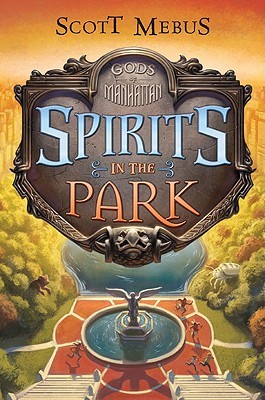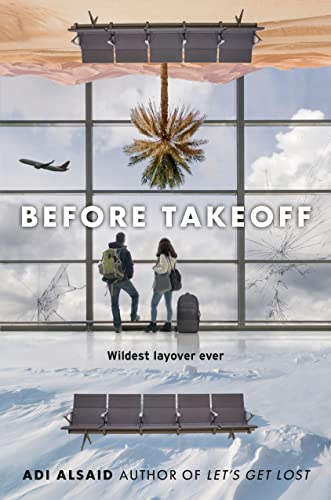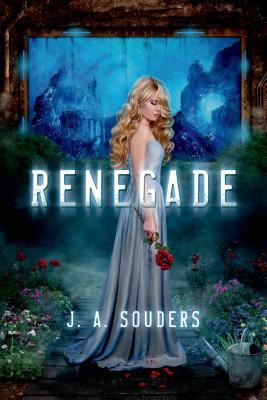[button color=”black” size=”big” link=”http://affiliates.abebooks.com/c/99844/77798/2029?u=http%3A%2F%2Fwww.abebooks.com%2Fservlet%2FSearchResults%3Fisbn%3D9780525421481″ target=”blank” ]Purchase here[/button]
In Book 2 of the trilogy titled Gods of Manhattan — which started with the book by the same name — young Rory Hennessy takes big strides toward fulfilling his destiny as the last surviving Light in the city, county, and state of New York. This sentence immediately confronts me with the problem that there is so much to explain, just so you can understand what I’m talking about as I try to describe this book, that I could very well say, “Read no further until you have read Gods of Manhattan.” There’s a lot to be said for doing so. This trilogy is really a most unique fantasy concept, and its complex layering of magical problems and solutions bears witness to a lot of intricate planning on its author’s part. I’m not sure I can do it justice in a paragraph or less. But I’m going to give it my best effort anyway. Brace yourself.
The fundamental idea of Gods of Manhattan is that people who have left a strong impression on the memory of the generations after them, live on as “gods” in a reality alongside our visible world. This reality crams together people and institutions that existed in all the different eras of history into a sort of augmented space that fits into regular space. So, for example, there is room for the original Waldorf-Astoria hotel on the same site as the Empire State Building that replaced it. And on the island of Manhattan, tied to that borough of New York City by a magical force called “blood,” are millions of spirits covering all periods of New York history, from the 1800s corrupt politician Boss Tweed (god of Rabble Politics), to colonial-era leaders such as Alexander Hamilton (the Mayor of the spirit-side of Manhattan), all the way back to the New Amsterdam period and beyond. Some of these “gods” lend their magic touch to areas they came to symbolize, such as the Korean shopkeeper whose talent for thwarting shoplifters led him to become the god of Put That Back. Many of these lingering spirits begot new families after their death—immortals, such as the young members of the Rattle Watch, who can never be gods because they never lived in the mortal world. And some of the gods have fallen, or continued the evil ways they followed during their mortal lives. This is why there is danger and conflict in this layer of reality where phases of history overlap each other—where the spirits of the Munsee Indians (who lived on Manhattan before the Europeans came) are magically trapped in Central Park—where power-hungry villains and their insane minions will use every means, from propaganda to murder, to thwart or destroy the only mortal who can see their world or help others to see it. Such a mortal is known as a Light. And that’s why Rory, being a Light, is lucky to have lived as long as he has.
All right, that was a long paragraph. But it covered most of the background. It left out a few things. You’ll have to find out at your own hazard why there are little men dressed in cockroach armor, some of them riding rats. And how Rory’s spunky little sister Bridget came by the papier-mâché body she sometimes uses instead of her own—a superhero gadget that has some amazing advantages, but also horrifying drawbacks. All these concepts are but a few of the ingredients swimming in the chowder of chilling danger, thrilling adventure, magic, action, romance, mystery, heartbreak, and nuggets of historical trivia that this book cooks up. Some of it is rather chewy. But, if I may murder this metaphor to death, it will also warm your insides, nourish your mind, and energize you. As Rory searches for his long-lost father in the mists at the edge of the world, Bridget has her own adventure in a super-sized, perilous park (Central Park, that is) haunted by resentful Indians, man-eating squirrels, traitors, friends, a rival for the heart of Rory’s almost-girlfriend, and clues to the disappearance of a girl who could heal the conflict between the trapped Munsees and the gods who betrayed them.
One thing is clear, however. The Trap must come down, or Manhattan will tear itself apart with earthquakes, storms, and whatnot. But when the Trap frees the Munsees from their 150-year captivity in Central Park, will there be war? Somehow Rory, Bridget, and their friends hold the key to the fate of all the gods of Manhattan and the spirits in the park. And even in this book’s climactic conclusion, there is clearly much more danger to be faced, and many questions still to be answered. To find out how it all turns out, look to the third book of the trilogy: The Sorcerer’s Secret.



